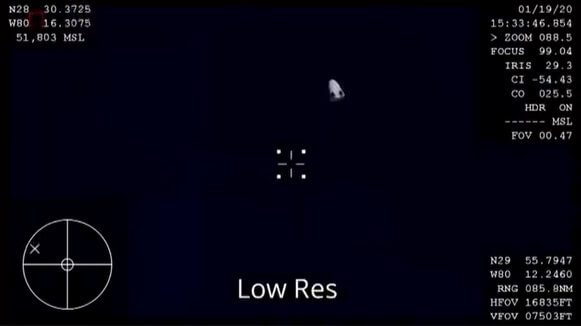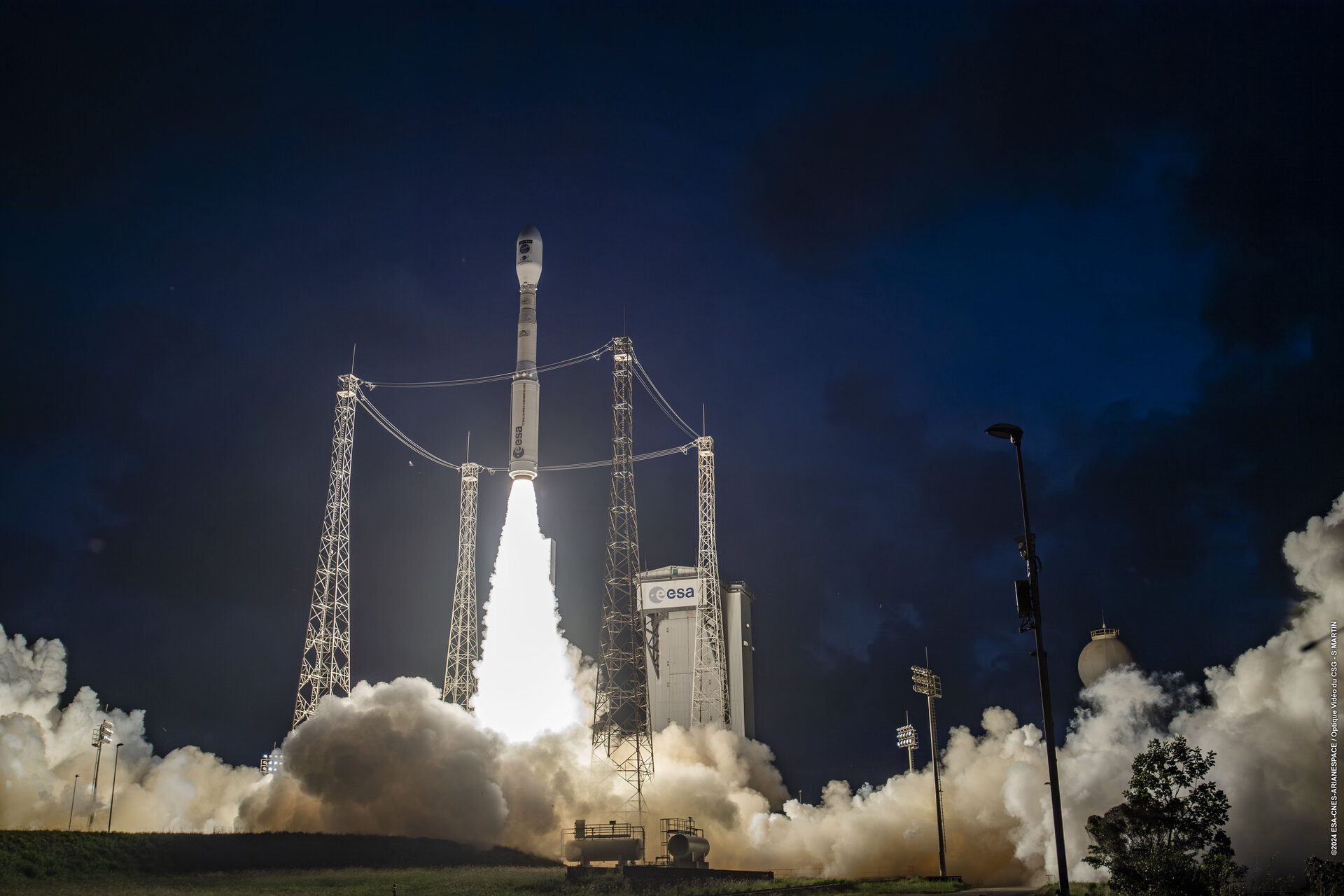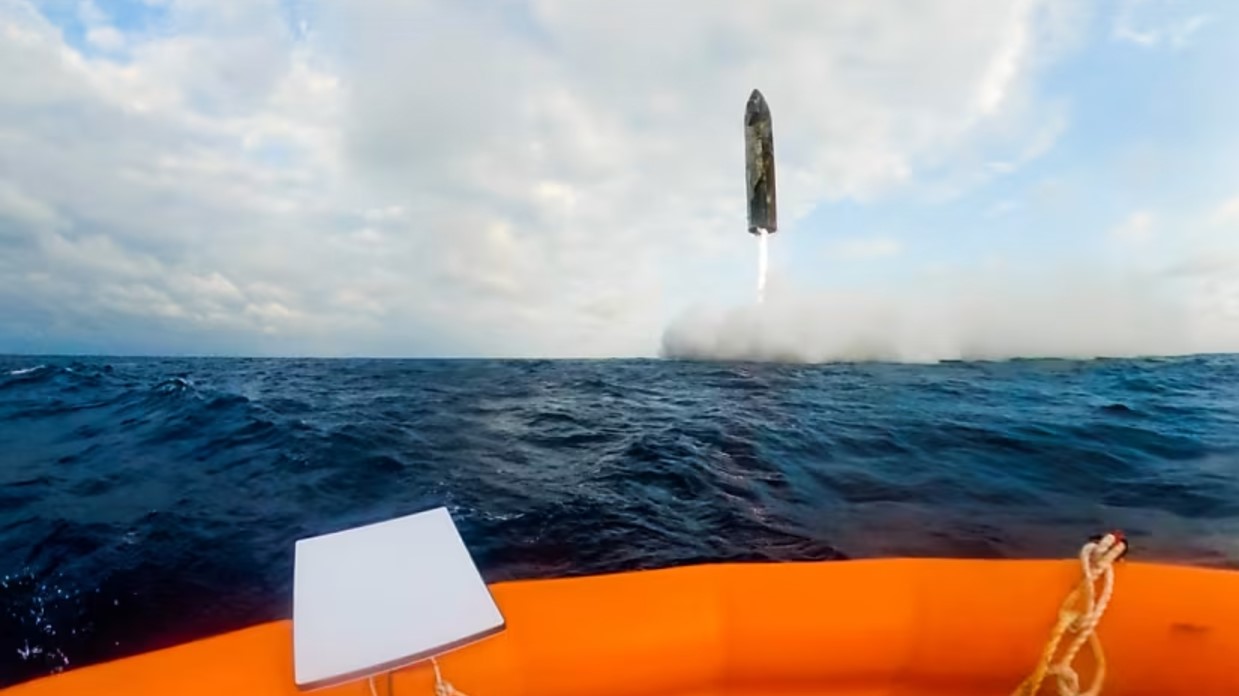While doubts remain about the SpaceX Crew Dragon, especially after its total destruction during a ground test last year, SpaceX appeared to vindicate itself after making a full flight test of the system before it begins carrying astronauts to the International Space Station under NASA’s Commercial Crew Program. NASA and SpaceX made a suborbital endo-atmospheric launch of a Falcon 9 from the Kennedy Space Centre in Florida, at 1530 GMT on 19 January, in order to perform an unmanned escape demonstration of the company’s Crew Dragon spacecraft.
The rocket employed a reused first stage (B1046) which was flown on a normal flight path. It was equipped with an inert Falcon 9 upper stage mimicking a fully loaded version. About T+86 seconds after lift-off, the first stage was intentionally shut down and about a second later the Crew Dragon (Capsule C205) escape system was triggered in a simulation of an abort situation. The capsule’s body-mounted SuperDraco rocket thrusters then used an 8-second burn to push the capsule away from the rest of the Falcon 9 rocket.
In a piece of theatre about two seconds after the capsule’s escape, SpaceX deliberately exploded the first stage rocket making the escape look all too real. As it did so, the capsule flew on, making a ballistic arc and peaking at a velocity of Mach 2.2. It reached an altitude of circa 40 km before the trunk section was discarded. A pair of drogue parachutes was then deployed, followed by four main parachutes to allow the capsule to make a slow splashdown in the Atlantic Ocean, 32 km down range and about 9 minutes after launch.
NASA Administrator Jim Bridenstine put his irritation over past delays and the less than perfect test of the SpaceX’s competitor, the Boeing commercial crew capsule Starliner, behind him when he said: “This critical flight test puts us on the cusp of returning the capability to launch astronauts in American spacecraft on American rockets from American soil.” Effectively, this test meant that NASA will soon no longer have to buy “seats” for its astronauts on the Russian Soyuz rocket launched spacecraft at exorbitant prices in order to get them to the International Space Station.
Comment by David Todd: Whatever NASA or SpaceX says, the sidewall location of its SuperDraco escape thrusters means that this capsule is unsafe. Period. If this writer was an astronaut, he would be praying for a flight to the ISS on Boeing’s CST-100 Starliner or on the Soyuz system, or even the pressurised cargo version of Dragon. But not on this one.








